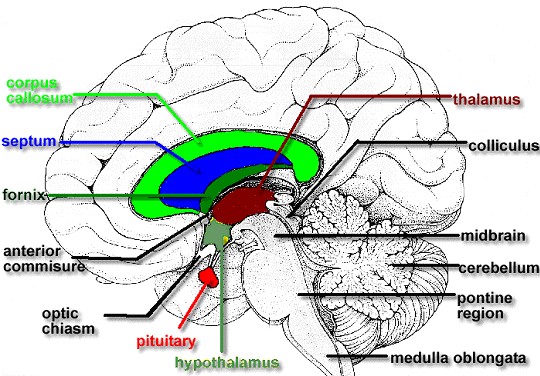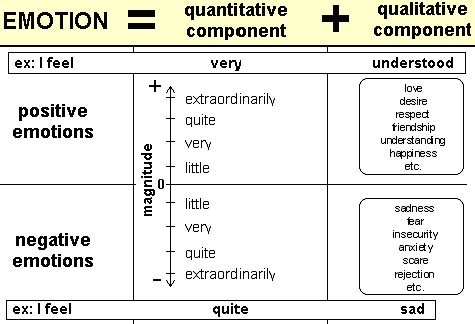The Biology And Psychology Of EmotionsPhysiologically, human beings are generally identical to each other. So what accounts for the diversity of human personality and behavior? The brain is the one organ that defines our individuality and distinguishes humans from one another based on behavioral and mental differences. The oldest, most rudimentary manifestation of these differences predates language and is known as emotion. Emotions are unique to each individual and deviations from person to person are the result of a person’s genes and environment working in conjunction. The end result is a complex network of mental processes that, when triggered by stimuli, sets off a chain of psychological and physical reactions that are expressed internally and externally by emotions. The biological processes by which emotions operate mirror those of the rest of the brain and nervous system. The vast network of brain cells (or neurons) responsible for the development and realization of emotion communicate through a series of chemical signals. They utilize neurotransmitters to relay their signals to other parts of the brain or body, thus generating other emotions or causing some of the physical side effects associated with certain feelings.
Numerous theories involving the origins, mechanisms and nature of emotions have been generated and discarded over the years. Emotional theorists began by trying to answer the question of whether physical states cause emotional responses or vice versa. Chronologically, the progression began with the James-Lange Theory, which was opposed by Walter Cannon. The James-Lange Theory was later modified by Schachter, as well as by the facial feedback theory. In 1890 William James (Carle Lange held similar beliefs, and thus the model is termed the James-Lange Theory) put forward the idea that when a reaction to a stimulus occurs, the physical reflex (such as perspiration, a racing heart, facial expression, etc. ) precedes and determines the emotional reaction. Generally, the theory states that “reflexive peripheral responses precede the subjective experience of emotion, and each particular emotion is created by a particular pattern of physiological patterns. ” In James’ opinion, emotion is the realization of physiological responses, and without a physical change a person cannot experience an emotion. Thus, James did not think that emotions could be generated in the brain alone, and he disputed the idea of structures in the brain that could produce emotions single-handedly. Several later concepts seemed to dispute the James-Lange Theory, such as the discovery that patients with spinal chord injuries were able to experience a full range of emotions. However, this was explained by the theory in that most patients still had use of their facial muscles, which were encompassed among James’ emotion-producing physical reflexes. This formed the basis for the facial feedback hypothesis, which held that “involuntary facial movements provide sufficient peripheral information to drive emotional experience. ” However, a sound basis to doubt the James-Lange Theory is given when considering how animals experience emotions when all the nerves to and from their body have been cut. In this way, scientists have been able to prove that it is possible to elicit and inhibit certain emotions by stimulating specific areas of the brain, subsequently refuting the James-Lange Theory. Stanley Schachter mainly agreed with the James-Lange explanation of emotions, but believed it needed some adjustments. He thought that using different physiological response patterns to account for emotions was too simple to accommodate all the nuances of human emotion. Schachter’s Theory claimed that when a stimulus is perceived, it is interpreted and prompts the physiological responses associated with it. Then a mental assessment of the situation takes place, which allows the person to attribute the physiological changes to specific causes and identify the emotion they are feeling. In this way, similar physical changes can cause a person to feel different emotions depending on their interpretation. Walter Cannon offered an opposing point of view on the topic of emotions. He believed that emotion could be produced in the brain alone. His theory stated that “sensory information about emotional situations first reaches the thalamus, which sends signals simultaneously to the autonomic nervous system and then to the cerebral cortex. ” Consequently, Cannon’s Theory held that a sensory stimulus triggered simultaneous signals that produce emotion and induce physical side-affects. Cannon’s Theory has been updated to assert that different parts of the central nervous system, not just the thalamus, are responsible for emotional responses. None of these theories are solely accepted, but it is generally acknowledged that the mechanics of emotions encompass different aspects of the theories discussed above. Interpretation of different physiological changes, including facial expressions, is one component of emotion. However, the brain can also generate emotion without added input from the body. It is thus believed that simple emotions occur naturally within the brain, while the assessment of physical states enhances emotional experiences. Emotions are an amazing method of communication with the self and with others. They are the ultimate truth, because individuals cannot escape emotions even if they manage to hide them from the outside world. Emotions can be felt as happening to or because of the self, and when this quality is combined with the many other characteristics of emotions, the basis for the multitude of potential emotional responses that can be elicited becomes apparent. Emotions color experiences and have the significant ability of allowing individuals to react to stimuli in such ways that make their thoughts and feelings readily apparent. Bibliography |

